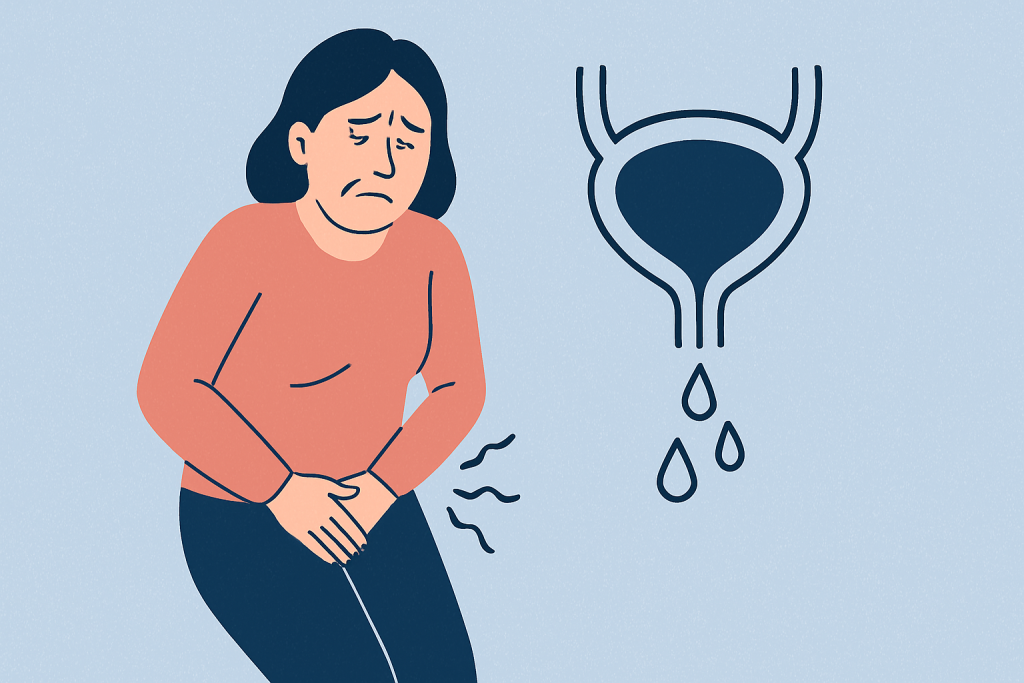Urinary incontinence is a condition that many women experience but often hesitate to talk about. It can affect daily activities, social life, and confidence. To manage it effectively, it’s important to understand the Causes of Urinary Incontinence and explore the available treatment options. By learning more about this common issue, women can make informed choices about their health and wellbeing.
What are the Causes of Urinary Incontinence?

The Causes of Urinary Incontinence vary depending on age, health conditions, and lifestyle. For many women, weak pelvic floor muscles after pregnancy, childbirth, or menopause play a major role. Medical conditions such as urinary tract infections, obesity, diabetes, and neurological disorders can also contribute. Identifying the root cause helps doctors provide personalized treatments that bring long-term relief.
Types of Urinary Incontinence in Women
There are several types of Urinary Incontinence in Women, each with different causes and symptoms:
- Stress Incontinence – leakage during coughing, sneezing, or exercise.
- Urge Incontinence – sudden, intense urges to urinate, often linked with an overactive bladder.
- Mixed Incontinence – a combination of stress and urge incontinence.
- Overflow Incontinence – when the bladder doesn’t empty fully.
Understanding these variations helps in managing Female Urinary Incontinence more effectively.
Exploring the Causes of Urinary Incontinence in Depth
Let’s break down the most common Causes of Urinary Incontinence:
- Pregnancy & Childbirth – Pelvic floor muscles can weaken, leading to bladder leaks.
- Menopause – Reduced estrogen levels may affect bladder and urethral tissue.
- Age-related Changes – Muscles lose strength with age, increasing bladder control issues.
- Medical Conditions – Conditions like diabetes, urinary infections, or neurological problems worsen bladder control.
- Lifestyle Factors – Obesity, smoking, or high caffeine intake may trigger symptoms.
By addressing these Causes of Urinary Incontinence, women can take preventive steps such as strengthening pelvic muscles or making dietary changes.
Treatment Options for Female Urinary Incontinence
Managing Female Urinary Incontinence depends on the severity and type. Common treatments include:
- Lifestyle Modifications – Weight management, fluid control, and quitting smoking.
- Pelvic Floor Exercises (Kegels) – Strengthening muscles to improve bladder control.
- Medications – Drugs that calm an overactive bladder or strengthen urethral muscles.
- Medical Devices – Pessaries or urethral inserts for support.
- Surgery – In severe cases, procedures like sling surgery help restore bladder function.
With the right diagnosis of the Causes of Urinary Incontinence, these treatments can significantly improve quality of life.
Living with Urinary Incontinence in Women
While Urinary Incontinence in Women can feel overwhelming, it is not untreatable. Open conversations with a UroGynecologist, regular check-ups, and personalized treatment plans can help women regain confidence. By understanding the Causes of Urinary Incontinence and seeking the right treatment, women can manage symptoms effectively and lead healthier, more fulfilling lives.
